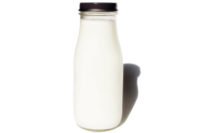The UK’s Royal College of Obstetricians and Gynecologists (RCOG) released a scientific impact paper recommending pregnant women reduce use of food and beverages in cans and plastic packaging to minimize exposure to bisphenol A (BPA).
The paper explains that while current risk assessments for endocrine disruptors like BPA suggest current levels of human exposure are low enough not to pose a risk, the risk assessments are performed for individual chemicals. Scientists worry that measurement standards fail to account for potential harm resulting from materials containing several distinct endocrine-disrupting chemicals at low enough levels that each stays within safe levels.
According to RCOG, “on present evidence, it is impossible to assess the risk, if any, of such exposures. Obtaining more definitive guidance is likely to take many years; there is considerable uncertainty about the risks of chemical exposure.”
Scientists recommend pregnant women adopt a safety first approach, which means assuming all products contain some risk even when that assumption is unfounded or later disproven. The paper recommends women opt for fresh foods whenever possible and reduce the use of cans and plastic containers as food storage vessels.
The paper says because of the ubiquity of endocrine-disrupting chemicals in everyday products, determining their impact is difficult due to the lack of an exposed “control” group. However, RCOG was able to determine that when individuals switched to fresh, unpackaged versions of their usual foods, levels of BPA and a phthalate in their urine decreased by 65 percent and 53 percent, respectively. When they returned to previous eating habits, levels of endocrine-disrupting chemicals returned to pre-intervention levels.
European assessments of BPA seem to clash with a recent update to FDA’s website on the topic of BPA. According to FDA, “the available information continues to support the safety of BPA for the currently approved uses in food containers and packaging. People are exposed to low levels of BPA because, like many packaging components, very small amounts of BPA may migrate from the food packaging into foods or beverages.”




